





Mining
Blasting
Excavation
Shifting
Sizing
Sorting
High Grade Bauxite
Transport To Plant
Feeding To Plant [CYLO]
Crushing [Jaw Crush]
Rotary Kiln
Cooling OutLet
Arranging Products
Packging
Transport
Law Grade Bauxite
Washing
Transport to port
Export

Basic mining process is systematic open cast - semi-mechanized as per the following stages:
a) Mine development - overburden removal.
Since the bauxite occurs close to the surface, with a shallow overburden (at places it is exposed at the surface itself). Mine development is carried out by direct removal of overburden using excavators. Drilling / blasting also done wherever required. Open cast mine benches are developed to facilitate proper bauxite excavation.
b) Pre-Mining grade assessment of the area to be mined by trenching / pitting and drilling bore holes at the exposed surface.
Systematic sampling / analysis is done to ascertain grade at various point. Grade wise volumes available are recorded in the plan. Exploitation phase is planned based on the above inputs.
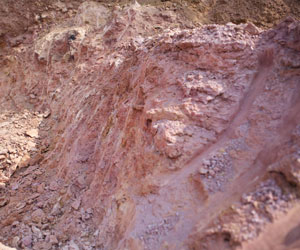
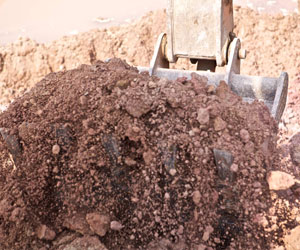
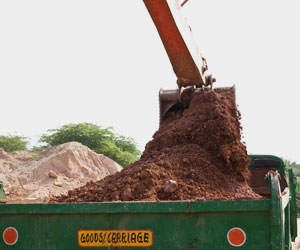
This operation is carried out systematically through drilling, blasting and mucking, under the guidance and supervision of qualified and govt. approved blaster, geologist and mining engineer.
Excavator and dumpers remove the blasted and loosened material. The company has its own set of mining machinery (details given later) and also hires respective items whenever required additionally.
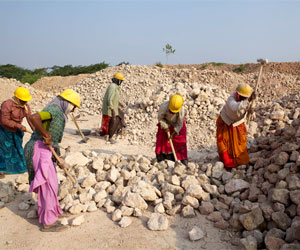
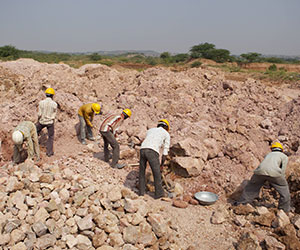
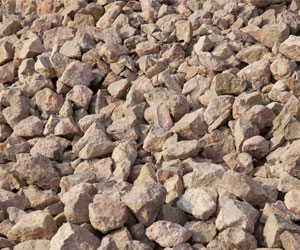
This operation is carried out for sorting materials according to their size.
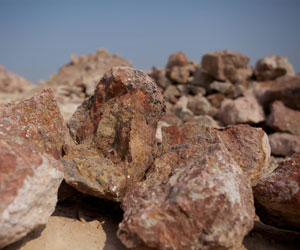
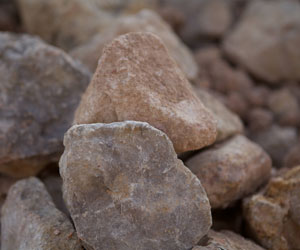
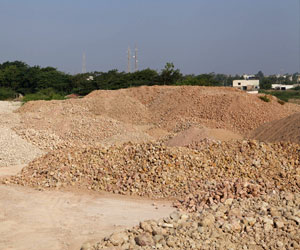
Quality wise sorted materials are graded in different categories like High Grade , Medium Grade & Low Grade.
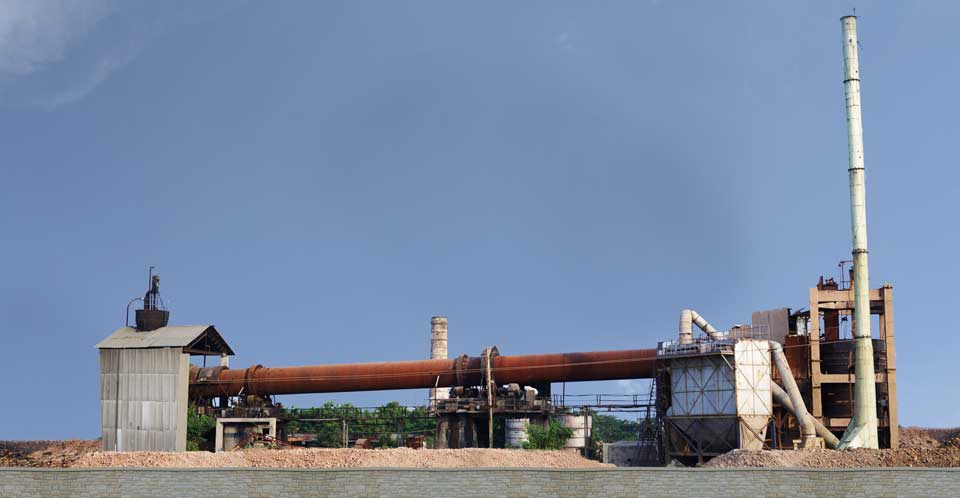
The two technologies are used for Calcination of bauxite namely Rotary Kiln & Shaft Kiln.
The company owns three crushing and screening plants which are installed and working at two locations. They are used to prepare cargo of size ranging from 0 to 75 mm. each of these has capacity to process 1.25 MT/ hr or on average around 2000 MT9 2 shifts) of bauxite per day.
The crushing /screening plant details are as below:
1. At Dawari – RAN
One crushing/ screening plant having 1200*300 mm jaw crusher and 3600*1200 mm triple decker vibrating screen, with production capacity of 75 MT/ hour
2. At Mewasa
M-330 mine- having two units of jaw crushers 0f 900*300 mm and 3600*1200 mm triple decker, two vibrating screens,with combined production capacity of 75 MT/ hour min.
a) Burning
b) Cooling
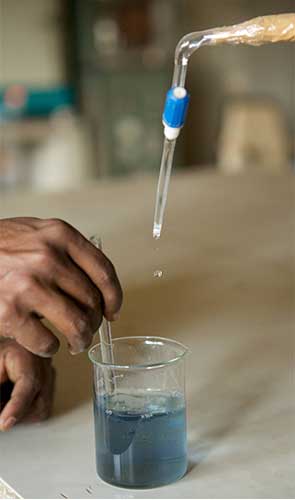

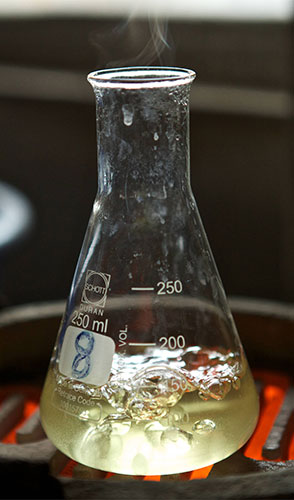
This is the only mining company in the area which has got an operating and active chemical testing laboratory, located near calcination plant at Bhatia. The laboratory is well equipped and staffed to undertake conventional wet chemical analysis as well as for rapid instrumental determinations of various elements in raw bauxite and calcination bauxite.
In addition to full complement of wet chemical analysis facilities and equipment the laboratory also has the following sophisticated instruments.
The laboratory facilities are also supplemented by sample preparation Facilities which compromise:
The above set up is useful in carrying out large number of sample analysis on daily basis:
The laboratory generally follows ISO, Japanese and Bureau of Indian Standards (BIS method for analysis various elements in bauxite).
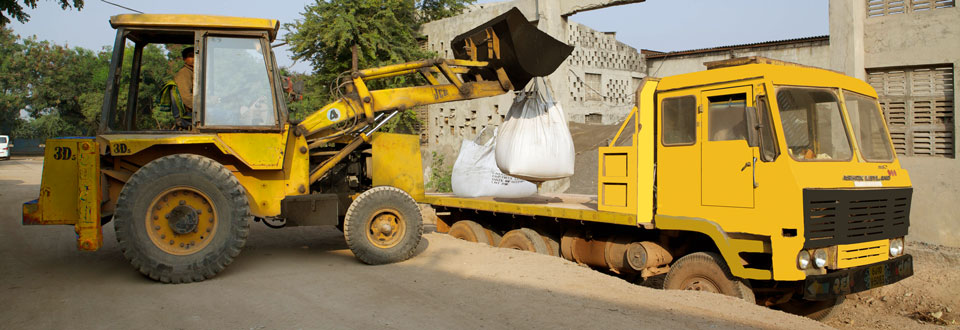
Preparation of excavated bauxite into exportable cargo involves the following stages.
a) ROM Sorting and grade assessment:
The excavated material is removed from the mine to a dumping plot nearby and then subjected to manual sorting to remove large size boulders (more than 300mm) and also non-bauxite foreign material to minimize contamination. If required the large size bauxite bearing boulders are broken into smaller size boulders.
The desirable sorted material is removed to the ROM stockyard and stacked in 500 MT stacks.
Each of these stacks is sampled and chemically tested to know the grade.
Based on this determined grade the material is sent to crushing and screening plant.
b) Crushing and Screening:
Grade wise separate ROM stack wise material is fed to the crushing and screening plant whereby '4' size fractions are produced:
-10mm, 10 - 30mm, 30 - 75mm and + 75mm
Size wise material is then transported to the stockyard and stacked in 500 MT stacks. These individual stacks are once again sampled and analyzed for grade and categorized accordingly.
Now the cargo is ready for dispatch to port as per requirement. Cargo which satisfies size and quality requirement only is dispatched to port.
Material is mostly handled and moved internally using tractor-trailers / dumpers from one point to the other point. For this the company has its own fleet of trucks / dumpers and tractors. Whenever required additional vehicles are hired also. Basic movement sequence is as given below:
Note: The Company has a pro-active practice of dispatching prepared cargo - 500 M.T. to 1000 M.T., round the clock, to port and converge stack, which are readily available for ship loading. We maintain these stocks at the port whether and contracted shipment is due or not. When the shipment is declared the daily cargo movement rate to port is enhanced up to 1500 MT and can be further increased, if needed. Daily inventory of cargo at port is maintained and reported.
The company has assiduous cargo management practices whereby ample care is taken to ensure that cargo contamination and quality dilution is minimized and grade / size wise cargo traceability is maintained, from one stage to the other.
The storage plots are prepared properly with minimum one foot bauxite soiling and their boundaries are well demarcated. Unauthorized movement is not permitted. The stock handling and movement are always conducted under regular supervision.
For the case of identification and traceability the graded cargo stocks are placed with placards bearing quantity and quality details.
CARGO HANDLING AT PORT AND SHIP LOADING
a) CARGO STORAGE PLOT AT PORT
We are maintaining a 40, 000 sq. Mtr. plot at the port of Porbandar, Gujarat State for cargo storage and management. The plot is kept clean at all times. Whenever a shipment is completed the remaining cargo at the plot is segregated separately and the plot is made ready to receive fresh cargo. All this is done to prevent cargo contamination.
The cargo is moved into the port plot by trucks / dumpers and unloaded forming separate stacks as per size, grade and quality for each buyer. Each stack is of 1000 MT.
There is a documented system to maintain traceability of the incoming cargo each truck wise. Prolific records are maintained and daily cargo movement / convergence in the port is also prepared.
The necessary machinery to handle the cargo in the plot is available with the handing agent, who works under active supervision of the company supervisors. We also have deputed well experienced and skilled staff at Okha Port on permanent establishment who has having experience of 50 to 60 shipments made during last 3 / 4 years and they performed remarkable role in quality controlling and ship loading.
It is a regular practice of the company to keep proactively moving cargo into the port plot. On an average 500 to 1000 MT of cargo is moved every day. However, when a shipment is declared the movement rate is increased to 1500 MT per day even more when required. This way we are able to converge required cargo well in time and effect the shipment without any delay.
So far ships up to 60,000 M.T. capacity have been calling at Porbandar Port. Ship loading takes place in two ways.
Ship loading record:
It is a practice of the company to plan and undertake ship loading meticulously. The ship loading process is continuously supervised by a director of the company at the port to achieve best possible results.
In a short span of ‘2’ years have established a sound reputation as dependable shippers. When required have risen to the challenges and achieved loading rates of up to 16500 MT Per day also.
But for ‘force majeure ‘ reasons on two occasions have always loaded shipments in time (92% shipment on time).
Production and shipping capacity:
Since we have to feed own bauxite for calcinations plants also, on daily basis, we are operating four mines (out of eight) exclusively for this purpose. The other four operating mines thus cater to export and local sale needs. The current optimum production capacity for exports, at an average 40% recovery,rate factor, ranges between 50-55000. Hence keeping in view other demands and exigencies SCABAL can export up to 50,000 MT Metallurgical and other grade of bauxite per month.
The production and shipping capacity can be enhanced also if more areas opened/developed. Hence it has also to be kept in mind that during monsoon/rainy months (June to August) the mining activity as well as port operations get almost closed, hence shipments are not possible during these months.
It is the policy of the company to be self-sufficient in all respects, as far as possible.
Accordingly company has own infrastructure and logistics support, as per the following details.